This page contains affiliate links. I’m part of the lululemon collective and will receive a commission if you make a purchase through the links below. As an Amazon Associate, I earn from qualifying purchases. Read the full disclosure here.
If you have chronic knee pain or sensitive knees, you may be concerned about your ability to participate in a consistent yoga practice (or any fitness routine for that matter).
You might even be wondering if practicing yoga will leave you feeling worse?!
Fear not. One of the great things about yoga is the ability to meet you where you are, no matter what.
How exactly do you protect your knees during yoga? You’ve come to the right place!
Give your knees a break with these props and tips to help personalize your practice and keep sensitive knees happy!
Disclaimer: This content is for educational purposes and is not medical advice. Read the full disclaimer.
Knee anatomy for yoga
A quick crash course in anatomy to appreciate the complexity of this joint during everyday movements and yoga poses.
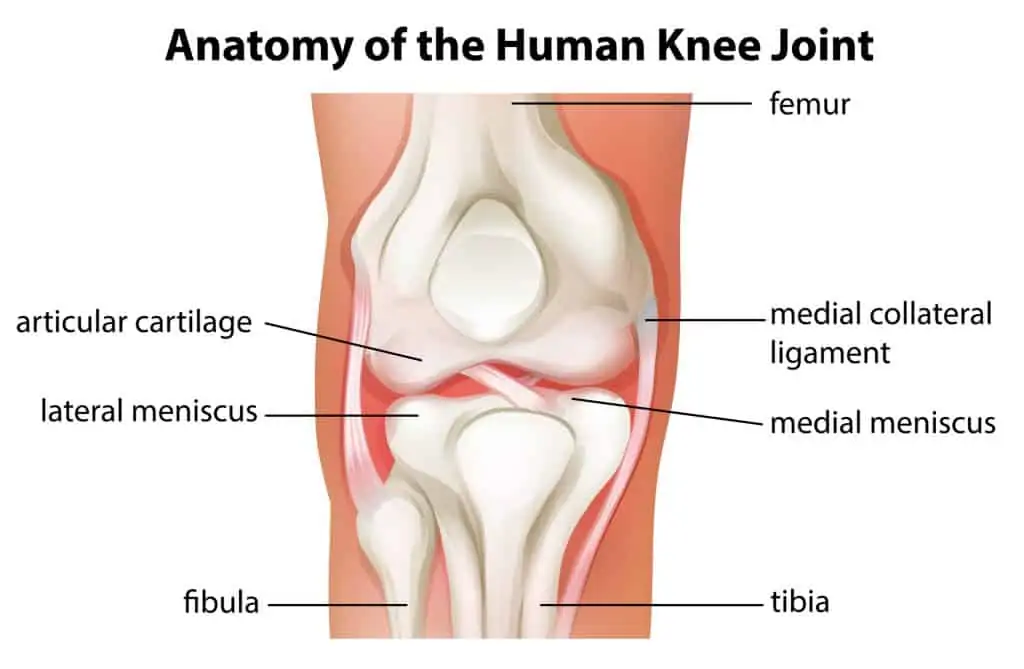
The knee is sandwiched between the hip and the ankle and is actually two joints.
The tibiofemoral joint joins the thigh bone (femur) with the lower leg (tibia), and the patellofemoral joint is the knee cap that interacts with the femur.
The patellofemoral joint slides up and down with movement and acts as a fulcrum to allow the quadriceps to have more power – a rather genius human mechanics design.
The fibula is the small bone on the outside of the shin. It has some connections to the knee joint via soft tissues but isn’t directly considered part of the knee joint.
At a casual glance, the knee appears to only move in flexion and extension (bend and straighten). While this is the majority of the movement, there’s also a small amount of rotation within the joint, which helps us accommodate 3-dimensional movements.
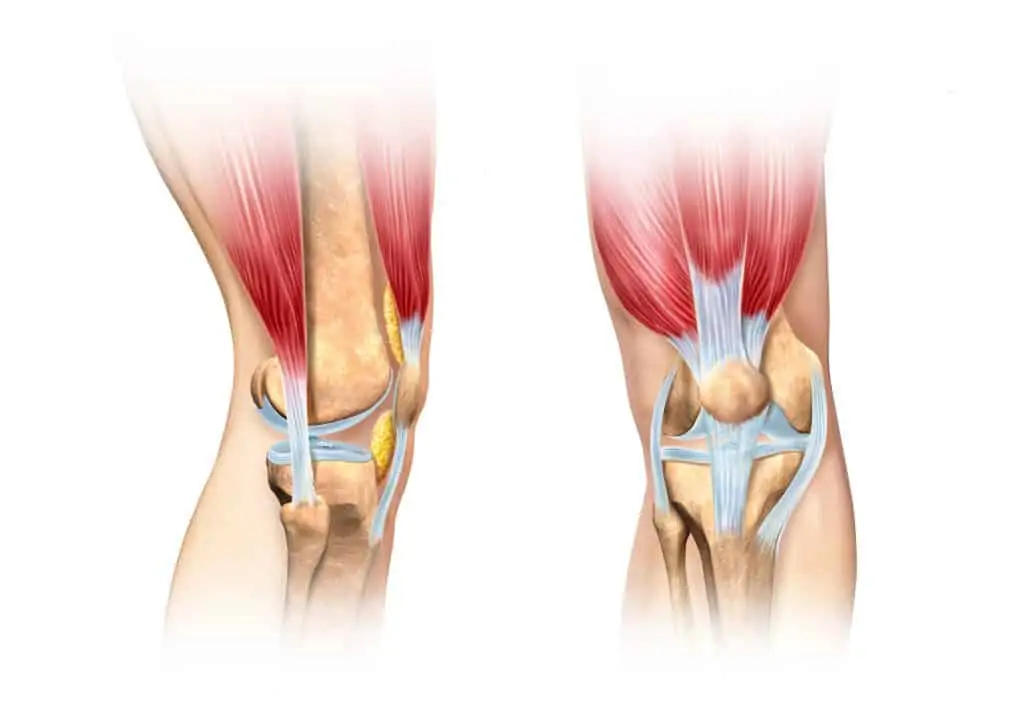
Collateral ligaments (medial and lateral) help keep the sides of the joint stable.
The ACL (anterior cruciate ligament) and PCL (posterior cruciate ligament) help with stability from the inside by limiting how far the joint surfaces can slide forward, back, and rotate. The knee also has ligaments to help with side-to-side stability (medial collateral ligament and lateral collateral ligament).
The menisci (medial and lateral meniscus) help cushion and improve the joint’s congruency (how the joint surfaces fit together).
The quadriceps (at the front of the thigh) and hamstrings (located at the back of the thigh) are large muscle groups that contribute to the direct muscular stability of the knee.
Issues at the hip and ankle can also impact the knee joint. This can be in the form of referred pain or wonky forces due to a change in mechanics and might affect which poses are comfortable for you.
Is yoga ok for bad knees?
“Bad knees” is very subjective. Everyone’s tolerance to various movements and poses is different, so there’s no one set of poses to avoid if you have bad knees.
Yoga is also rather vague, in that there are several styles of yoga that can benefit bad knees, as well as styles or poses to avoid.
Each pose has different levels of knee flexion (bending), extension (straightening), and rotation (twisting), and other forces on the knee joint.
Movements can affect the knee joint even if they don’t appear to at first glance. Some yoga poses can be uncomfortable even with healthy knees.
In general, slower-paced styles of yoga with proper props and modifications (such as Hatha, slow Vinyasa, Restorative, Yin, Chair, or Viniyoga) can help improve range of motion, flexibility, and strength.
The key is to listen to your body and adapt postures to you.
It’s also essential to understand your pain and what movements are aggravating to adapt accordingly and feel comfortable.
Here are some common poses that involve kneeling, twisting, or flexion that can be tricky for those with sensitive knees:
- Kneeling poses (e.g., tabletop or low lunge)
- Lotus pose
- Fire-log pose (demonstrated in the photo below)
- Pigeon pose
- Warrior 1 & 2
- Hero pose
- Yogi squat
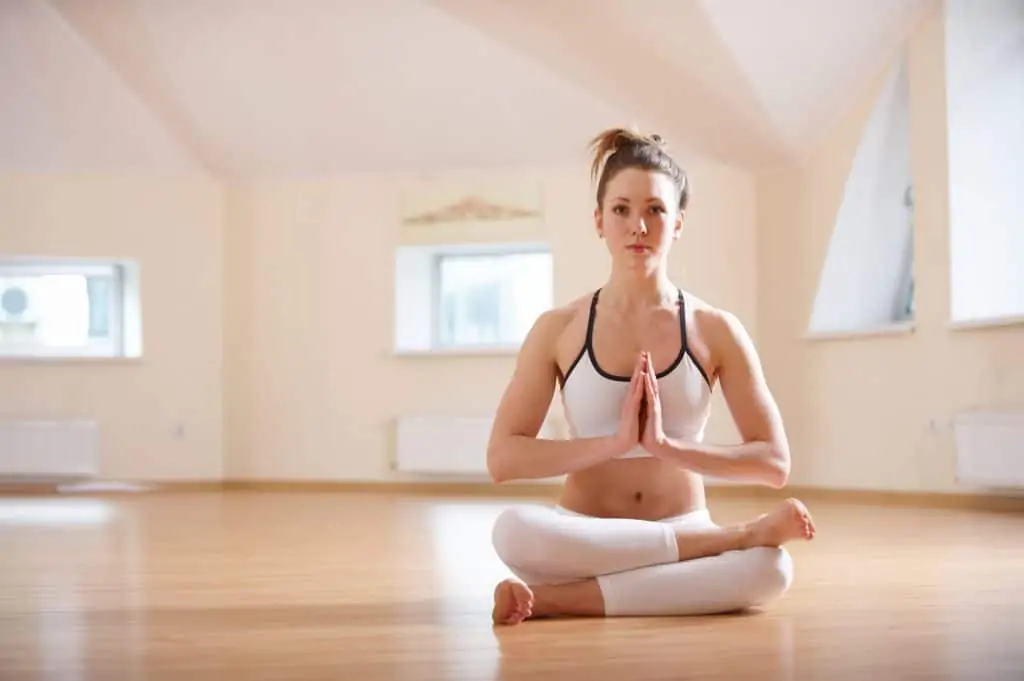
Best yoga props for sensitive knees
Props are going to be your best friend to keep your knees safe during yoga.
Many beginners have a negative view of props. Using props doesn’t make you look weak or inexperienced. Using props makes you look smart for understanding how to work with your body.
Many times, using a prop can allow you to deepen your pose and make your practice more effective because you’re not struggling as much.
Explore these props to help you tailor your practice to what feels good for you.
Don’t forget to check out which retailers are offering cash back through Rakuten. Use my referral code to earn up to a $30 bonus on your first qualifying purchase just for signing up.
What’s the best yoga mat for bad knees?
Let’s start with how your mat can help to support the knees. Two important features to look for in a mat are cushioning and a non-slip surface.
Thicker mats will provide comforting support to your joints. Non-slip is vital because if you’re struggling to keep your footing, those sudden little slips and twists can take a toll on sensitive joints.
5mm is a typical thickness for mats. Different materials will provide other sensations of cushioning.
Jade and Maduka offer an extra thick yoga mat, ideal for those wanting more cushioning for joints or other sensitive tissues.
Alternatively, you can also layer two mats on top of each other, for example, your mat on top of a studio mat to avoid carrying two mats or one very heavy mat.
Here are some top-rated non-slip mats to add to your search:
Related read: Outstanding Yoga Mats For Sweaty Hands To Transform Your Practice
Yoga knee pads
Yoga knee pads can give sore knees a break and are a smart investment for sensitive knees. The Gaiam yoga knee pads are small gel pads to place under your knees during kneeling (or wrists, elbows, etc.).
A super thick option offering a ton of knee support for yoga is a balance pad. Traditionally used for standing balance exercises, balance pads are also ideal for cradling sore joints.

I recommend this option for those needing a lot of cushioning (like cozy memory foam mattress level cushioning). It has even helped people return to their practice comfortably after a knee replacement.
You can also use a balance pad as a cushion for your seat to slightly raise the hips and provide extra padding. This prop can also be used to pad the elbows or offer wrist support.
Check out the Clever Yoga Balance Pad and the Airex Balance Pad.
For more options, check out my article on the best knee pads for yoga.
Yoga blanket
A blanket is another versatile prop that can be folded or rolled in various ways to provide the support that you need.
A yoga blanket has a suitable thickness and weight to provide cushioning for many different poses, including kneeling poses.
Blankets are inexpensive and a great addition to any practice to ease joint pain. If you don’t want to buy too many props, a blanket is multifunctional. You can also use a folded towel.
I have the Benevolence LA yoga blanket (pictured below) which is available on Amazon.
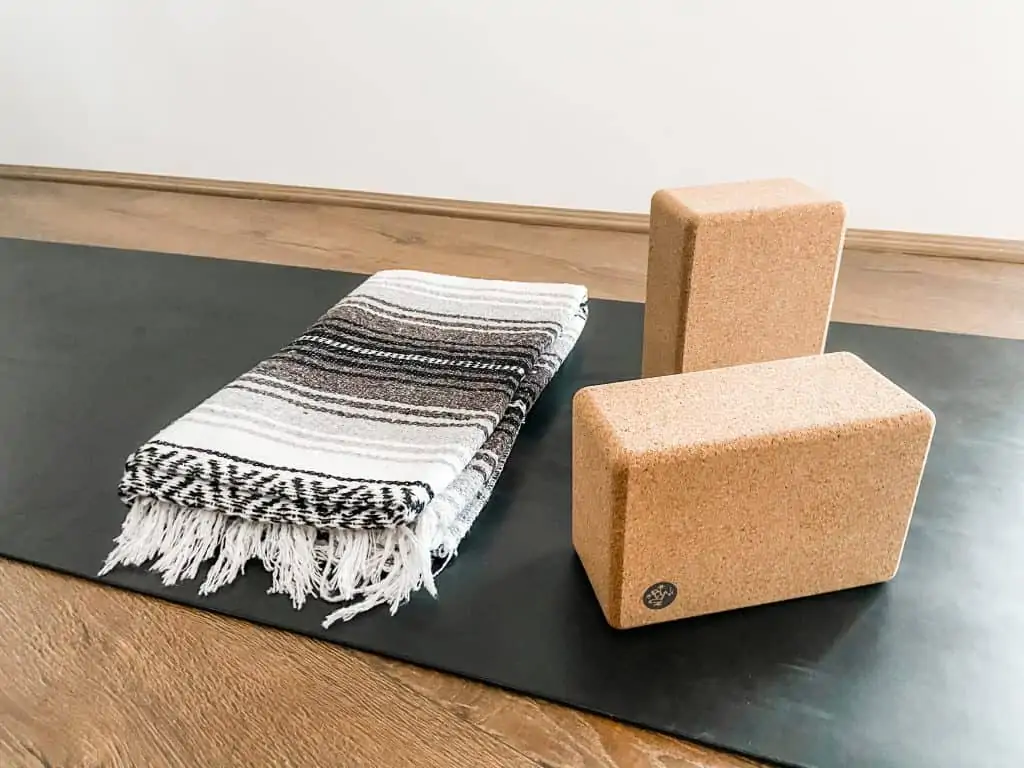
Yoga blocks
After a good quality mat, blocks should be next on your radar to get the most out of your practice.
Such a simple piece of foam (or cork) provides endless options to support, deepen, and add dimension to any practice from beginner to advanced.
Blocks have many benefits for sensitive joints. They can bring the floor to you and create more space to tailor poses to what feels good in your body.
Blocks can also decrease the range of motion required by your knees in certain poses.
Some great places to use blocks to help ease discomfort are:
- To sit on during malasana (yogi squat)
- Under your hips in pigeon to support a level pelvis
- Under your hips in hero or easy seat to ease range of motion for the knees
Best budget foam blocks: Clever Yoga (set of 2)
Best sturdy foam blocks: Hugger Mugger Foam Yoga Block
Best cork blocks: Manduka Cork Yoga Block
Related read: How To Use Yoga Blocks To Prevent Injury
Yoga strap
With knee discomfort, your range of motion may be limited or painful, making some poses difficult or nearly impossible without causing more pain.
A yoga strap can help you extend your reach and can be a real lifesaver for poses such as:
- Dancer
- Low lunge with a quad stretch
- Prone quad stretch
- Reclined pigeon
- Supine hamstring stretch
When you can reach further without compromising form, there will be less strain and range of motion required from your knees (and other joints), allowing you to adapt any pose to your comfort level.
You’ll look like a pro at your next yoga class for knowing how to work with your body!
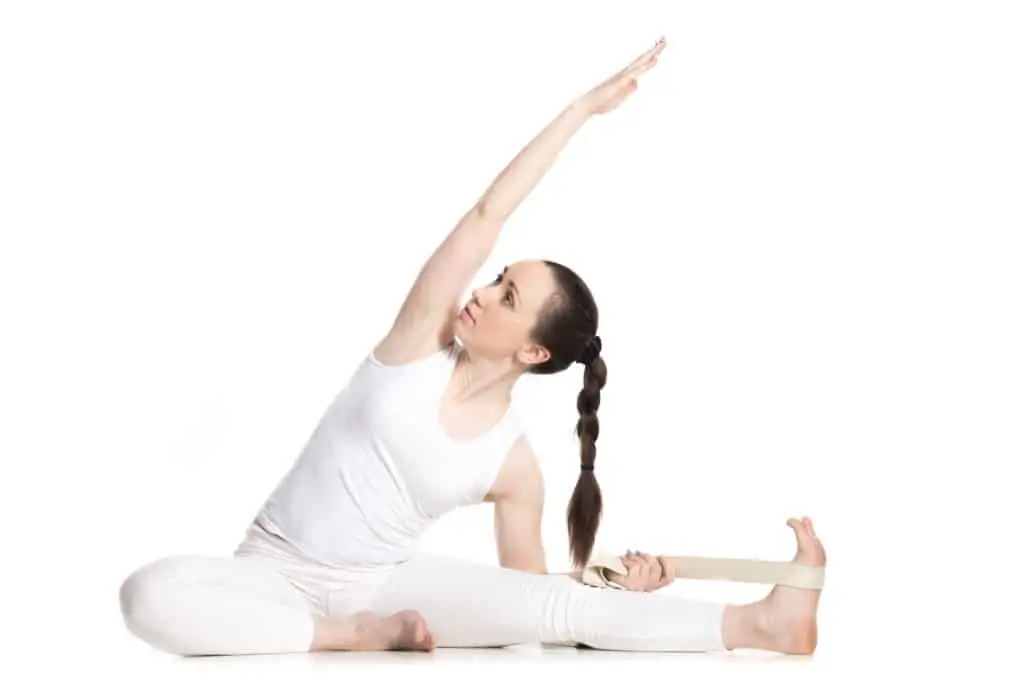
Bolsters
Bolsters are super cozy and supportive, especially for restorative poses or under the knees during savasana.
Leaning your chest onto a bolster during child’s pose is also an option for limited knee flexion to make the pose more comfortable by raising your body.
Bolsters come in a variety of shapes and sizes to offer comfortable support where you need it. Make sure you shop around for the right shape bolster for you!
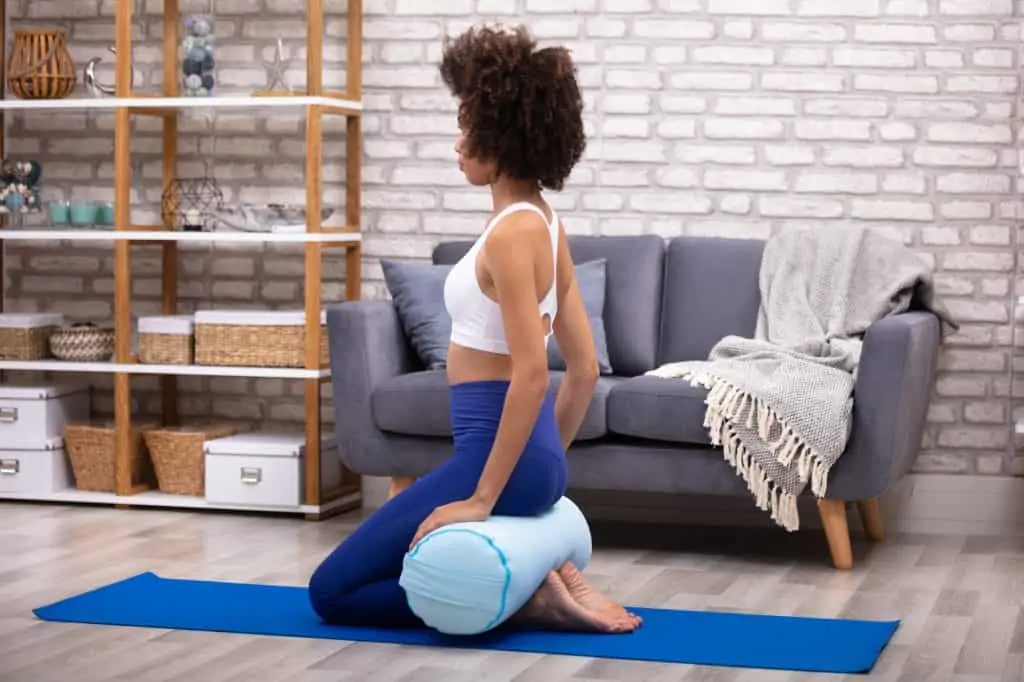
Chair yoga
The first time I tried chair yoga, I was amazed at how many poses you can do. Support from the chair allows you to get deeper into poses with less pressure on your knees.
If you have concerns about getting down and up from the floor, balancing, or recovering from an injury, a chair can bring a welcome safety net to your practice.
Think of it as a huge block providing an elevated and sturdy surface to bring the floor to you.
You can do a full chair yoga practice, or just keep it nearby for some added support.
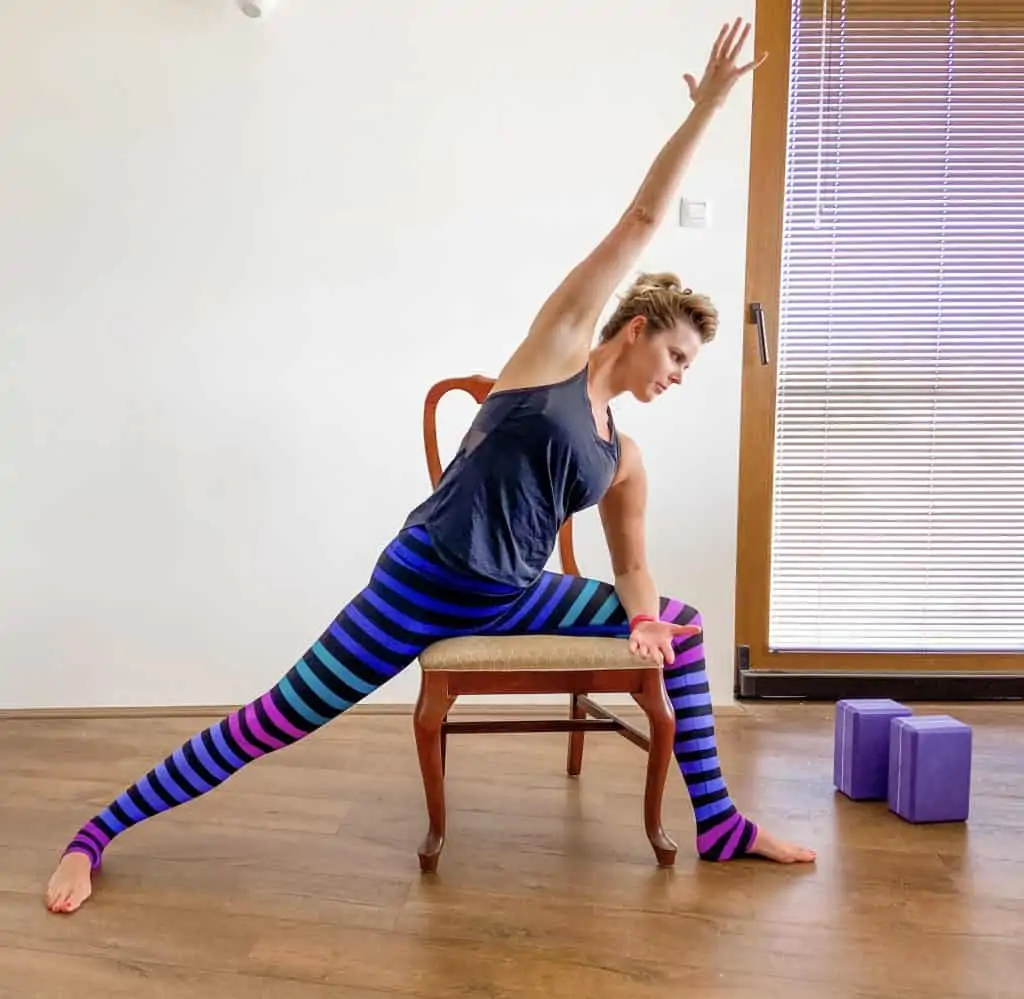
Do knee braces help?
I get this question a lot. And the answer is: it depends.
There are a lot of different types of braces for various injuries.
Compression sleeve braces are readily available at most stores and often a starting point when thinking about braces.
There is some evidence that a compression sleeve provides some proprioceptive feedback to the joint, like a comforting hug that makes you feel more stable. However, there may also be a placebo effect in place.
A knee sleeve won’t prevent you from getting hurt and may limit you by making you feel vulnerable when not wearing the brace.
A brace doesn’t change the pathology of why you have pain, so it’s always good to get evaluated by your doctor and physical therapist and find what else you can do to improve or manage your symptoms.
A patellofemoral brace has either a gel or foam ring around the knee cap and may also include some velcro straps. The goal of this type of support is to keep the knee cap (patella) tracking properly with movement.
A patellofemoral brace may be helpful for those recovering from injuries involving the knee cap.
Keep in mind that this type of brace is thicker and will restrict comfortable range of motion, especially with flexion (bending) the knee, and may not be comfortable for all poses. The more stabilizing features, the more it will restrict range of motion.
How to keep your knees safe during yoga
Learn proper alignment for poses
Proper alignment will vary slightly based on your anatomy, but basically, alignment means your ability to balance load and force through your joints.
Good knee alignment provides better protection for joints and soft tissues and decreases your risk for injury. Sometimes the slightest tweak can make all the difference.
The Science of Yoga and Yoga Anatomy are great resources to learn more about how the body works during movement.
Check out the Yoga Anatomy Coloring Book if you’re looking for a more interactive learning experience.
Move into and out of poses slowly
Unwinding mindfully, especially from poses that place some twisting forces on the joints, can decrease risk for injuries.
Take modifications and variations
Take modifications and variations for both poses and transitions.
Yoga can meet you wherever you’re at. Every yoga pose variation offers a different sensation. Take variations that feel good in your body.
Never risk hurting yourself to satisfy a movement or look a certain way in a pose. The internet glamorizes hypermobility, and while it might look pretty on Instagram, those joints won’t be happy for very long.
Try different styles of yoga
Slower paced classes like Hatha, slow vinyasa, and restorative yoga can be more forgiving on sensitive joints.
Don’t neglect strengthening
Don’t neglect strengthening exercises (outside of yoga) to keep the muscles that support your knees strong, especially the quadriceps, hamstrings, and glutes.
Disturbing fact: we begin to lose muscle mass after age 30 and muscle mass decreases between 3-8% per decade after, with even more significant loss after the age of 60. (Volpi, E. et. al., 2004)
Strength training should be on everyone’s list to keep bones strong and decrease the risk of injuries.
Physical benefits of a consistent yoga practice include strength, balance, and flexibility. However, yoga is not a one-stop shop for all your fitness needs.
While there is some benefit, the truth is that if your goal is to build strength, there are more effective ways to it.
Strengthening benefits from yoga will only get you so far and you should be incorporating specific strength exercises into your healthy fitness routine.
Keep a slight bend in your knees
Keeping a slight bend in your knees can help with balancing load by engaging muscles and protect the joint from hyperextending.
Adjust your base of support
Shortening your stance or widening your feet during standing poses can have a significant effect on your knees.
Play around with different variations of your stance to find what’s comfortable for you.
Adjust the ankle of your foot/leg
Adjusting the angle of your foot can decrease twisting forces on your knees.
You might hear big toes together for chair pose, but this doesn’t always feel good. Hip width distance a popular variation.
Everyone has slight anatomical variations. There’s proper form, and then there are slight variations to accommodate for your anatomy. That’s different than bad form that’s going to get you injured.
Get in-tune with sensations
With any type of movement, there will be different sensations.
Get in-tune with listening to your body and process sensations versus pain to explore poses and movements safely.
Learn about your knees
Learn about your knee injury for more specifics on the types of movements to avoid. Don’t ignore pain. Learn what you can do to rehab or work with your body.
Key takeaways
Don’t let knee issues stop you from enjoying yoga.
There’s plenty of ways to adapt your practice to get all the benefits without aggravating your knees.
Take these extra steps to work smarter with your body to enjoy activity and prevent injury.
Check out some of these versatile props to make your practice your own!
You might also like:
- How To Use Yoga Blocks To Prevent Injury
- Best Affordable Physical Therapy Tools For Home
- How To Protect Your Hamstrings During Yoga
- Outstanding Yoga Mats For Sweaty Hands To Transform Your Practice
References
Chew, Kelvin & Lew, Henry & Date, Elaine & Fredericson, Michael. (2007). Current Evidence and Clinical Applications of Therapeutic Knee Braces. American journal of physical medicine & rehabilitation / Association of Academic Physiatrists. 86. 678-86. 10.1097/PHM.0b013e318114e416.
Cudejko T, van der Esch M, van der Leeden M, et al. The immediate effect of a soft knee brace on pain, activity limitations, self-reported knee instability, and self-reported knee confidence in patients with knee osteoarthritis. Arthritis Res Ther. 2017;19(1):260. Published 2017 Dec 1. doi:10.1186/s13075-017-1456-0
Ghasemi GA, Golkar A, Marandi SM. Effects of hata yoga on knee osteoarthritis. Int J Prev Med. 2013;4(Suppl 1):S133-S138.
Mohd Sharif, Nahdatul Aishah & Goh, Siew Li & Usman, Juliana & Wan Kamarul Zaman, Wan Safwani. (2017). Biomechanical and functional efficacy of knee sleeves: A literature review. Physical Therapy in Sport. 28. 10.1016/j.ptsp.2017.05.001.
Mortaza N, Ebrahimi I, Jamshidi AA, et al. The effects of a prophylactic knee brace and two neoprene knee sleeves on the performance of healthy athletes: a crossover randomized controlled trial. PLoS One. 2012;7(11):e50110. doi:10.1371/journal.pone.0050110
Swain TA, McGwin G. Yoga-Related Injuries in the United States From 2001 to 2014. Orthop J Sports Med. 2016;4(11):2325967116671703. Published 2016 Nov 16. doi:10.1177/2325967116671703
Volpi E, Nazemi R, Fujita S. Muscle tissue changes with aging. Curr Opin Clin Nutr Metab Care. 2004;7(4):405-410. doi:10.1097/01.mco.0000134362.76653.b2
Wang Y, Lu S, Wang R, et al. Integrative effect of yoga practice in patients with knee arthritis: A PRISMA-compliant meta-analysis. Medicine (Baltimore). 2018;97(31):e11742. doi:10.1097/MD.0000000000011742

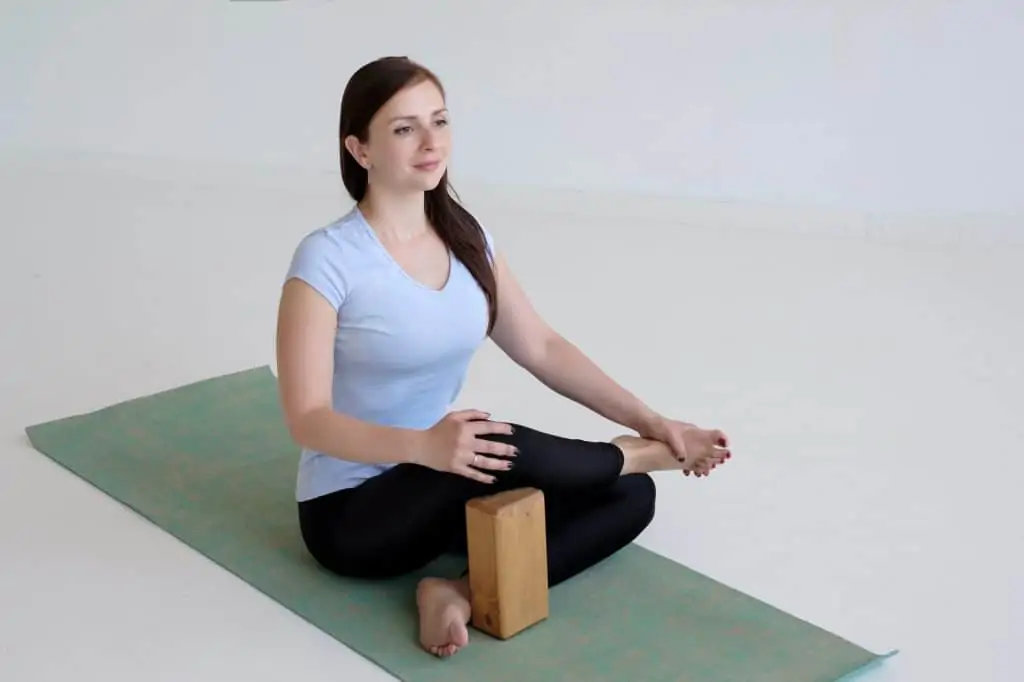
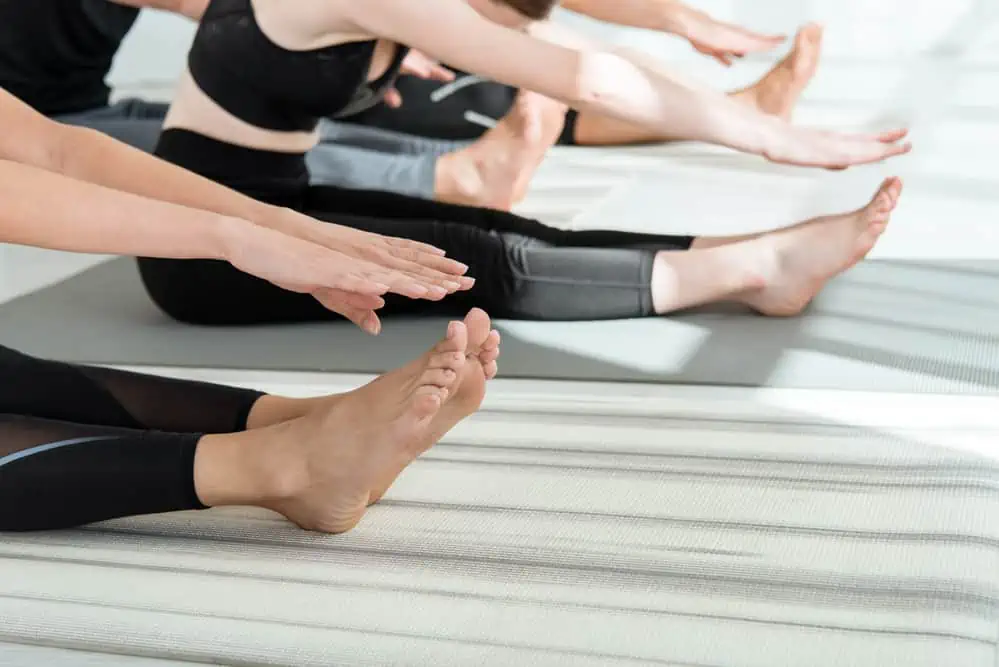
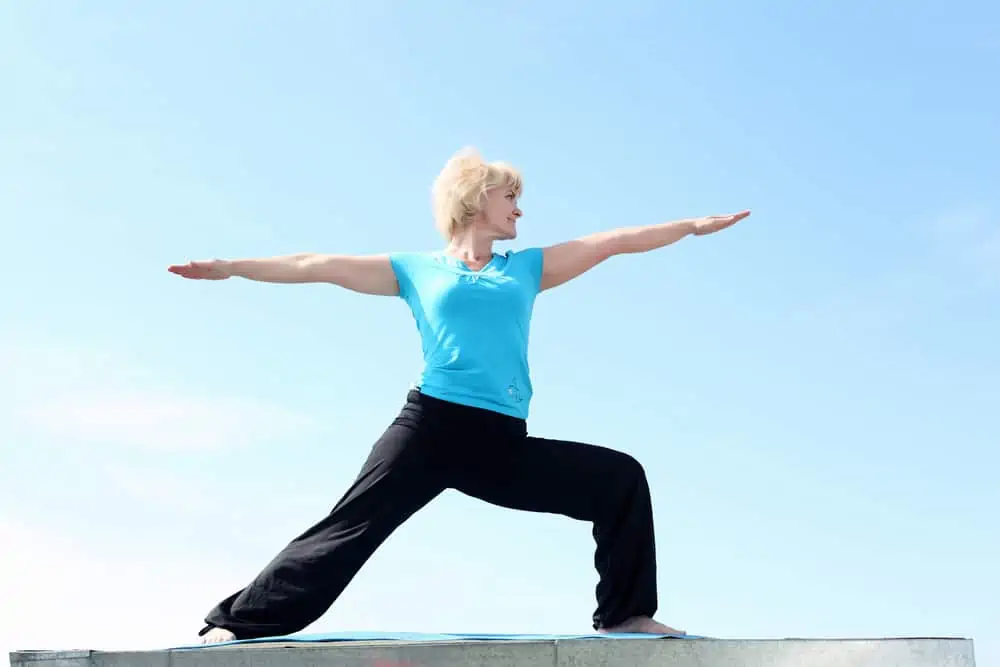
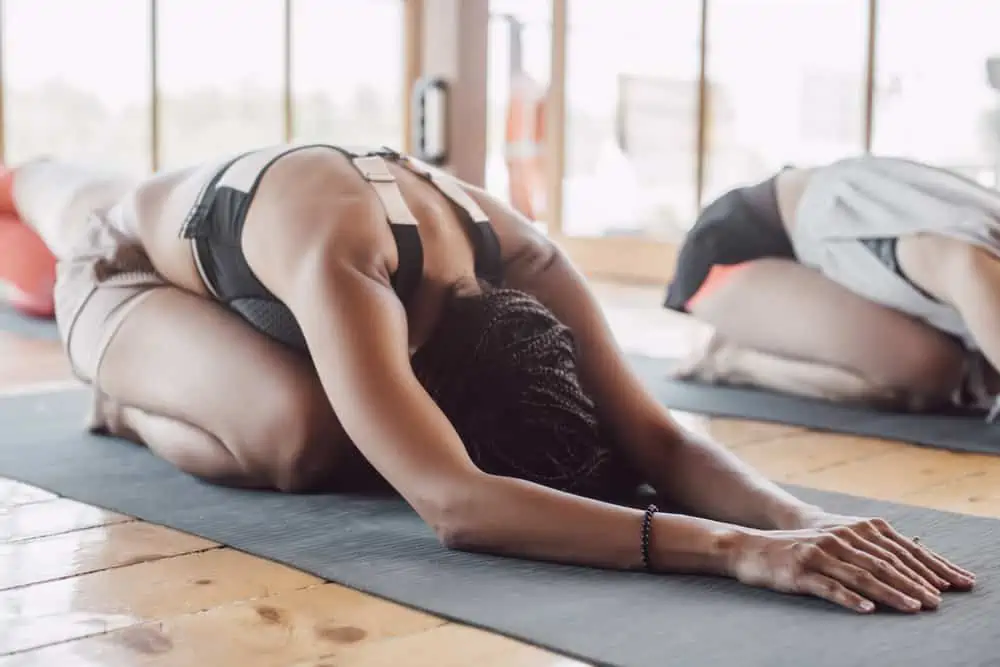
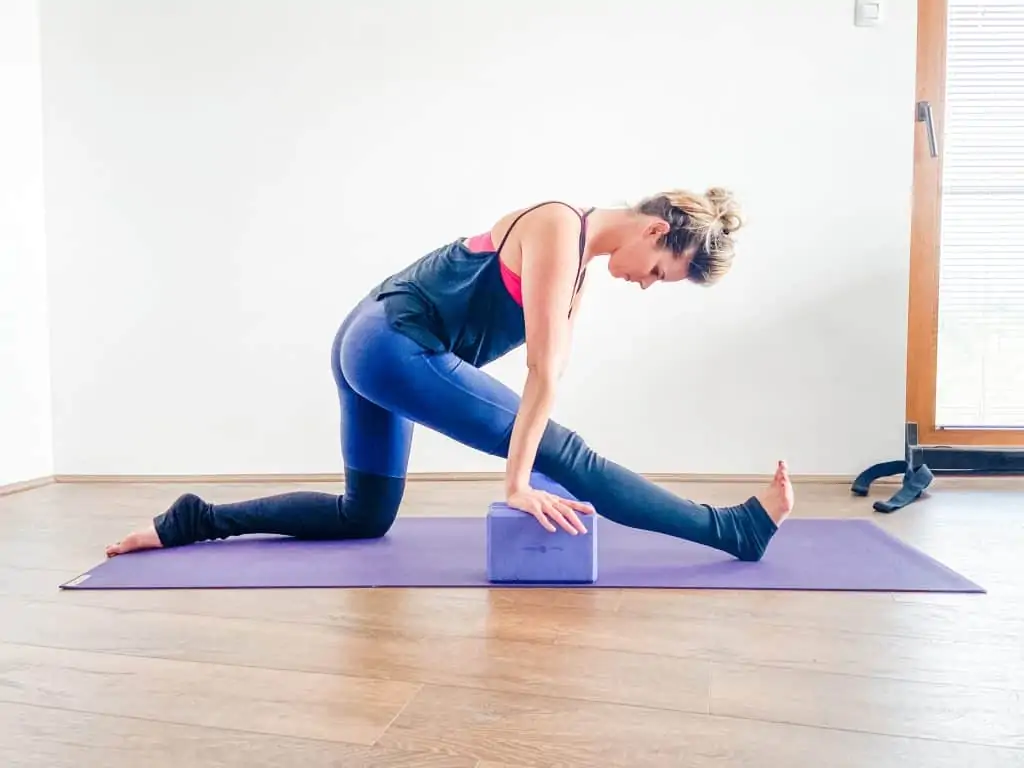
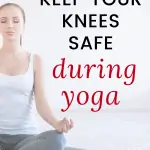

This is a really fantastically detailed post. I haven’t done Yoga for a while but I do exercise regularly – mostly weights and HIIT. I noticed when I started HIIT that my knees were crunching during squats and lunges and I figured out it was all to do with my form. Since I corrected my form I haven’t had any issues. I also started taking Omega 3 fish oil supplements. I’m not sure if it’s the placebo effect but I have also noticed a difference. Do you think supplements make a difference?
Thanks for reading! Proper form is key to maintaining joint health. Supplements are tricky and I don’t think there’s a clear yes or no answer, it’s definitely a personal decision and the right supplements will vary from person to person. It’s always good to research and discuss it with the appropriate health care provider.
I have weak knees, so this is mega helpful. Thank you!
Glad it was helpful, thank you for reading!